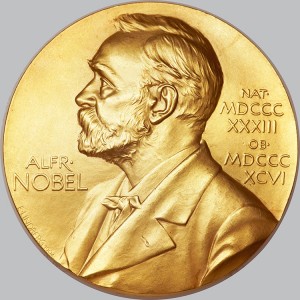Nobel Prize in Chemistry
October 6, 2016
Yesterday, October 5, the Royal Swedish Academy of Sciences in Stockholm, Sweden, awarded the 2016 Nobel Prize in chemistry to three scientists for developing tiny machines with huge potential impacts. Bernard L. Feringa of the University of Groningenin in the Netherlands, Jean-Pierre Sauvage of the University of Strasbourg in France, and Sir J. Frasier Stoddart of Northwestern University in the United States were all awarded shares of the prize for their pioneering work in the field of nanotechnology.
Nanotechnology is the systematic production of structures that are slightly larger than atoms and molecules. Nanotechnology relies on scientific and engineering disciplines, along with manufacturing technologies, to design and produce useful products. It involves working on the nanometer scale, or nanoscale. Nano means billionth. A nanometer is 0.000000001 meter ( 1/25,400,000 inch)—approximately 1/100,000 the width of a human hair or 3 to 5 times the diameter of a single atom. The nanoscale is considered to cover dimensions between 1 and 100 nanometers. Nanoscale materials, and the objects made from them, display fundamentally different properties and behavior than the same materials at larger scales.
Nanoscale machines were proposed in 1959 by the American physicist Richard Feynman—himself a Nobel laureate. But the technological difficulties associated with working on such a small scale stymied researchers for decades. Starting in the 1980’s, the three 2016 laureates began working separately on different materials, such as musclelike pulleys and spinning motors, that will form the backbone of future nanoscale devices. Nanotechnology has the potential to revolutionize virtually every technological field, from computers to medicine. Today, researchers are building upon the inventions of Feringa, Sauvage, and Stoddart to design the tiny machines of the future.



